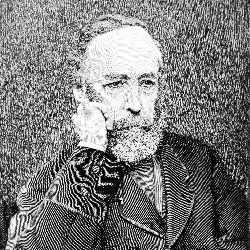James Croll - Early investigator of climate change
Now an obscure figure, James Croll was in his time a friend of the world’s leading scientists, including Charles Darwin and Charles Lyell, and developed theories that had a major impact on the way we now understand the Ice Age.
Yet he was not a professor at Anderson’s Institution, the predecessor to Strathclyde, or even a student – he was the janitor!
Head in the books
Born in 1821 into a modest farming family in Perthshire, he was educated only until the age of 13, when he was sent out to earn his living. Not in the best of health, he found solace in reading, devouring any book he could get his hands on, particularly those on the science of the day.
When he managed to get a job at Anderson’s Institution in 1859, he must have been delighted at the chance to explore the college’s library. Whenever he could get away from his duties he would lose himself in the works available for students.
James became particularly interested in climate, and began to see patterns in the way the Earth’s planetary orbit varied. Could these variations, he wondered, have caused such a drop in temperature that parts of the Earth now enjoying a mild climate could once have been frozen over?
Life-changing research
He pulled his ideas together into a scientific paper – no mean feat for a self-educated man who had never written an essay – which was published in Philosophical Magazine in 1864. Cagily signing himself as 'James Croll, Anderson’s Institution,' the scientific community of Britain was astonished to learn he held a janitorial position.
James Croll’s papers and subsequent research changed his life. He left Anderson’s Institution and was given a job at the Geological Survey of Scotland; he was made a Fellow of the Royal Society in London and of the New York Academy of Science. And his study in the library was acknowledged with an honorary degree from the University of St Andrews.
Not all of his theories were correct. The last ice age, which covered much of Europe in a mammoth glacier, was more recent than he thought, and the cycles of the earth’s orbit were more complicated than he had calculated. But later scientists used Croll’s ideas to develop our understanding of ice ages, temperature change and global warming. In changing his own fate, he showed us how fragile our climate is and how easily it can be transformed.
